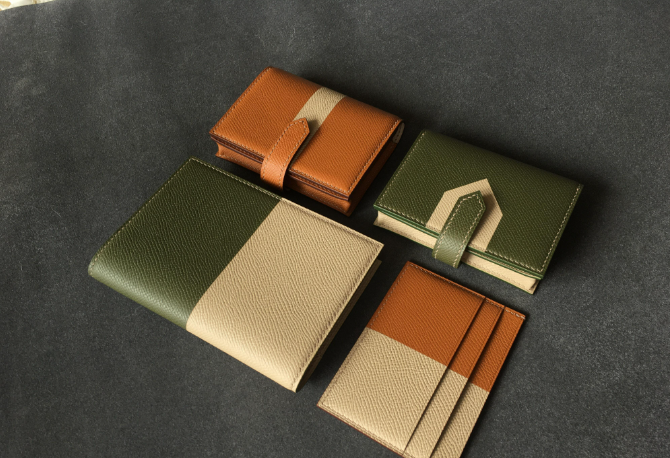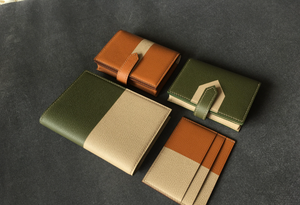
Standard details of leather goods inspection process - Inspection and certification services for factories
Having a wide variety of leather bags and accessories is the dream of many people. As high-end consumer goods, the quality of leather products directly affects the usage experience and brand value. To ensure that leather products meet industry standards and customer expectations, strict inspection procedures and quality certifications are of vital importance. This article will systematically introduce the inspection requirements that leather products need to focus on during the inspection and factory verification process, helping enterprises establish a complete quality control system and successfully pass product certification.
I. Appearance Quality Inspection and Certification Standards
Appearance inspection is the fundamental step in leather goods inspection, and it must be carried out strictly in accordance with the factory inspection and certification standards:
Package shape inspection
The shape is full and well-proportioned, with smooth arcs and symmetrical corners without any protruding edges.
The colors of the leather materials in all parts are consistent, the texture is uniform, and there are no damages, stains or coloring phenomena.
There are no obvious scratches, depressions or bumps. The use of edge oil to cover the flaws is prohibited.
The brand imprint is clear and well-positioned, and the decorative accessories are installed smoothly and firmly.
2. Inspection of Hardware Components
The colors of the hardware components in all parts are uniform, and their shapes comply with the design requirements.
No rust spots, discoloration, poor electroplating, oxidation, or scratches.
Install firmly and ensure that the functional accessories meet the design requirements.
3. Inspection of the zipper system
The color and model are correct, with no misalignment or teeth falling off.
The stitches are neat and straight, with consistent margins and a naturally smooth arc shape.
The color of the zipper fabric matches that of the main material, and there are no sharp corners on the zipper window and the zipper cover.
4. Inspection of edge oil treatment
The color of the edge oil is consistent with that of the main material, and it is smooth, flat and free of any marks.
No delamination, no overlapping, no overflow, neat and clean
The oil finish is smooth and resilient, firmly adhering without cracking.
5. Inspection of the sewing line
The sewing lines are straight, the stitches are even, and the needle holes are uniform (7-8 holes per inch)
The seam lines are evenly tight, and the seam lines have a three-dimensional effect.
It is strictly prohibited to have situations such as loose wires, broken wires, excessive rewiring, or balling and knotting.
6. Internal structure inspection
The internal stitching is firm, with no gaps or broken threads.
The bottom is flat and even, the adhesive is applied smoothly, and there are no glue marks or creases.
The rib is colorless and has a snug fit between the inner pocket and the inner edge of the leather bag.
The opening of the functional bag needs reinforced stitching, and the light-colored lining fabric should be free from any color bleeding.
II. Requirements for Functionality, Performance and Durability Testing
Functionality and performance testing is the core part of the inspection and certification process, and it directly affects the lifespan of the product:
Functional testing
All hardware functions normally under normal usage conditions and does not fall off.
The zipper slides smoothly, and the pull tab and pull ring are sturdy and durable.
The magnetic fastener has sufficient magnetic force and has shown no abnormalities after repeated opening and closing tests.
2. Structural Durability Test
The force-bearing areas such as the shoulder straps, handles, belts, and earpieces need to be reinforced with additional stitching.
High-quality load-bearing materials should be selected for reinforcement treatment.
There is no broken bone or bone-eating phenomenon in the edge bone bag, and there are no burst edges in the edge bag.
3. Weight-bearing Capacity Test
Carry out the corresponding weight-bearing tests according to the package specifications:
300MM size: Weight capacity 4KG
400MM and above specifications: Load capacity 5KG
Test standard: Under normal usage conditions, no detachment or damage occurs at any stressed area, and the package does not deform or crack.
III. Inspection and Testing Methods and Certification Process
1. Testing Method Standards
Specification measurement: Use a meter stick with a minimum scale of 1 millimeter for inspection.
Sensory inspection: Conducted under natural light, using visual and tactile methods for evaluation.
Functional testing: Conduct comprehensive tests by simulating actual usage scenarios.
2. Sampling inspection standards
If the qualified rate of sampling tests is ≥ 90%, it is determined as passing the inspection.
If the pass rate is less than 90%, double sampling re-inspection is required.
The re-inspection pass rate is still less than 90%, so it is determined that the inspection is not passed.
3. Defect Level Determination
Defects that affect the basic operational functions of the product shall be directly classified as unqualified.
The main defects include but are not limited to: structural cracking, functional failure, severe odors, etc.
IV. Key Points for Factory Audit Certification
To ensure that the leather goods products consistently meet the quality certification requirements, during the factory audit process, the following aspects should be given special attention:
Raw material control: Establish acceptance standards for key materials such as leather, hardware, and zippers.
Production process: Develop operation instructions for each process to ensure consistency of the process.
Quality records: Improve the inspection record system to achieve quality traceability.
Equipment maintenance: Regularly calibrate production equipment to ensure processing accuracy
Personnel training: Enhance the professional skills of quality inspection personnel and unify the inspection standards
Inspection and Certification Summary
The inspection and factory verification of leather goods is a systematic project that requires comprehensive testing from appearance quality, functional performance to durability. Enterprises should establish a complete quality management system and strictly implement inspection standards at each production stage to ensure that the products pass industry certification.
Share this product

Standard details of leather goods inspection process - Inspection and
Leather bags and accessories are the dreams of many people. As high-end consumer goods, the quality of leather products directly affects the user experience.
